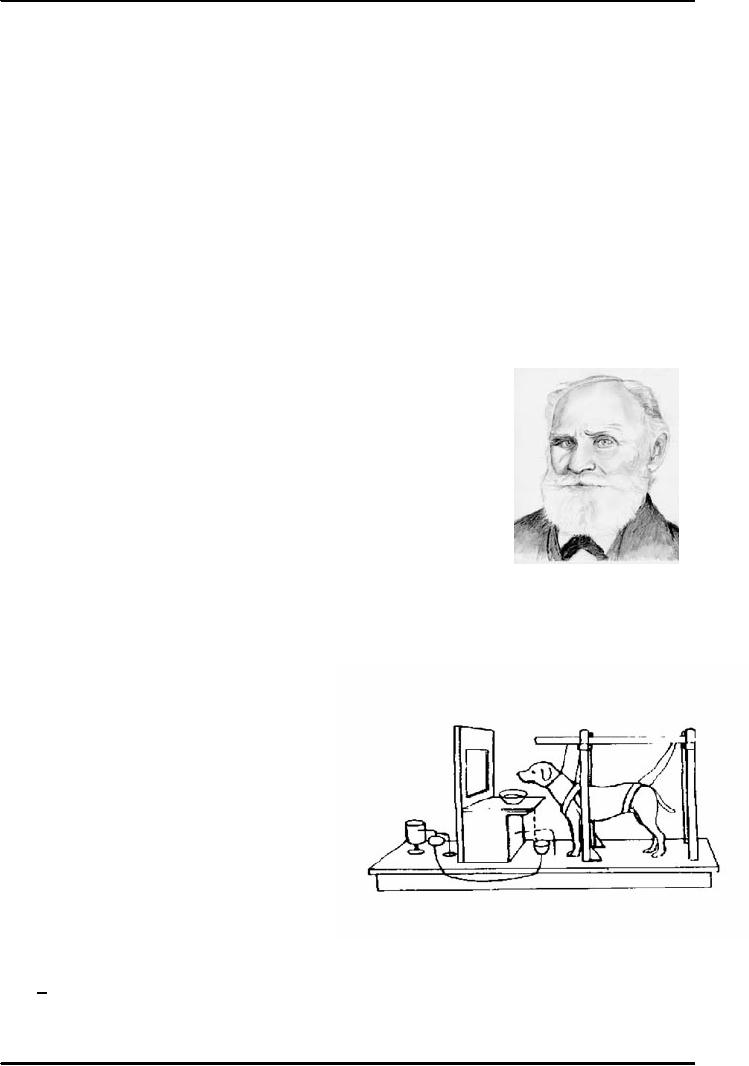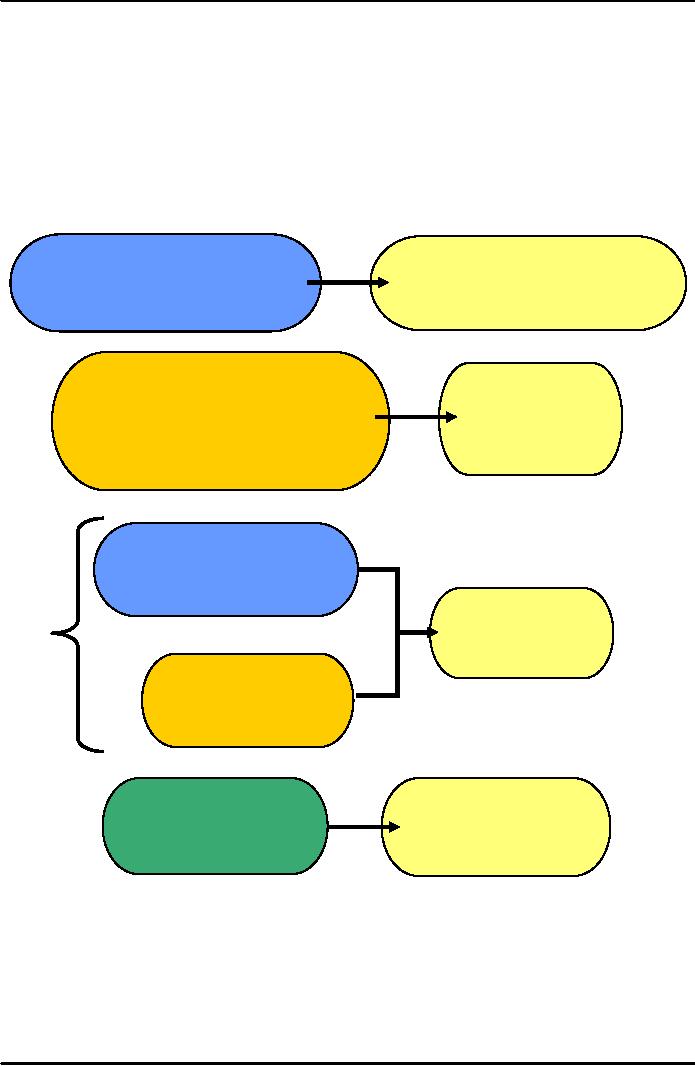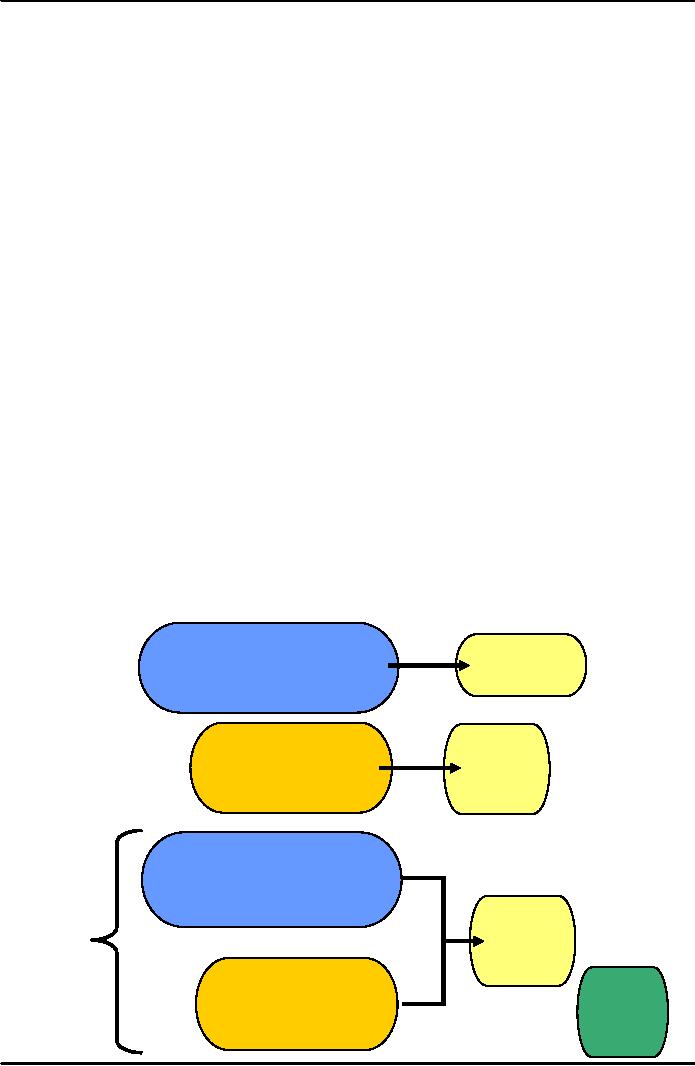 |

Introduction
to Psychology PSY101
VU
Lesson
20
LEARNING
�
Learning
is commonly understood as the act, process, or
experience of gaining knowledge or
skill.
For
a layperson it is knowledge or skill
gained through schooling or study.
With
reference to Psychology;
it
is the behavioral modification especially
through experience or
conditioning
�
The
best definition of learning is that:
Learning
is a relatively permanent change in
behavior,
and
the frequency of its
occurrence; this change is not automatic
and results from
practice
or
experience
�
Learning
usually refers to improved
performance, acquisition of skills, and a
positive change in
behavior;
however the change may also be
negative in nature
�
Learning is
distinguished from behavioral changes
arising from such processes
as maturation and
illness,
but does apply to motor
skills, such as driving a
car, to intellectual skills, such as
reading, and
to
attitudes and values, such as
prejudice.
�
There is
evidence that neurotic
symptoms and patterns of
mental illness are also
learned behaviors.
Learning
occurs throughout the life
span in humans and animals,
and learned behavior
accounts for a
large
proportion of all behavior in the higher
animals, especially in
humans.
Types/
Forms of Learning: In Terms of
the Content
Considering
the content of what has been learnt,
there are varieties of
learning:
I.
Verbal learning
ii.
Motor learning
iii.
Problem solving
Verbal
Learning
Basically
man is a verbal learner who
learns about the environment through
experiences.
�
Verbal
learning involves the person's own
association, experiences and relations
with the
phenomenon
that has been
learned.
ii.
Motor Learning
�
It involves
the practical application of the learned
phenomena.
�
There
are various tasks/ activities in which
motor skills are of primary importance
as
compared
to the ones requiring verbally learned
material; e.g. learning the skills
like playing
football,
tennis, cricket etc; or the
training of technicians whose
motor skills need to
be
highly
efficient.
�
In learning
motor skills two things are
important; quickness of movements
and the results
that
are achieved through
it.
iii.
Problem Solving
�
Problem
solving tasks usually involves trial
and error and primarily
include verbal processes.
�
While
doing the problem-solving task,
individual learns many
responses that can be
helpful for him
in
different situations
How
Do We Learn?
Three
main explanations of learning
are:
�
Classical
conditioning
�
Operant
conditioning
�
Cognitive
approaches to learning.
Basic
Terminology
Stimulus
A
physical energy source that
has an effect on a sense organ,
thus producing a
response.
120

Introduction
to Psychology PSY101
VU
i.
Response
�
The
action, behavior, or reaction triggered by a
stimulus.
Environment
�
External
factors, variables, conditions,
influences, or circumstance affecting
one's development or
behavior.
Variable
�
A
behavior, factor, setting, or event
that can change/ vary in amount or
kind.Classical
Conditioning
�
Why
are children scared of
darkness?
�
Why
some children jump with
joy at the sight of a cat
and some start screaming in
fright?
�
Why
does one coming from office
start feeling relaxed at the very sight
of his home?
�
Why
does one start feeling bad
at the thought of going to a
dentist?
�
Why
does one starts feeling
hungry at the sight of one's
favorite fast food
joint?
Classical
conditioning provides answers to
all these
questions
Classical
conditioning forms an association between
two stimuli.
Classical
Conditioning is
when a stimulus acquires the
ability to cause a response
that was previously
caused
by another stimulus. This learning process
essentially allows us to predict what is
going to
happen.
Historical
background
�
In
1879 Ivan Pavlov, the
Russian physiologist and pioneer
of
classical conditioning, began
his research work on
the
digestive process, primarily
that of dogs.
�
He
won Nobel Prize for
that in 1904.
�
The
focal point of his investigation was the
salivation reflex
in
dogs.
�
It
was already known that the
dogs would salivate if food
powder
were
led into their mouths, as it
was a `reflex.'
�
The
dogs would salivate every
time the food powder was
presented.
�
Pavlov
observed that after some time, the
dogs at times salivated just
before food was put into
their
mouths.
They also salivated at the
sight of the food, and even
at the sight of the lab assistant
who
brought
food for them.
�
This
is where the concept of
classical
conditioning
emerged.
Classical
Conditioning: The Theory
�
A type of
learning in which a previously
neutral
stimulus starts eliciting a
response
that
was originally the response to
a
natural
stimulus i.e., a stimulus
that was
meant
to produce that response; it so
happens
because the neutral stimulus
had
been
closely associated with the
natural
stimulus.
Basic
Terminology in Classical
Conditioning:
i.Reflex
�
An
automatic, unlearned
response
resulting
from a specific
stimulus.
ii.
Un Conditioned
Stimulus (UCS)
A
stimulus that elicits a
response reflexively, naturally,
and reliably.
121

Introduction
to Psychology PSY101
VU
iii.
Un Conditioned Response (UCR)
�
A natural,
reflexive, reliable, response of the
UCS.
iv.
Conditioned Stimulus (CS)
�
A
primarily neutral stimulus which, when
paired with the UCS, starts
evoking a
response
(different from its own
natural response) and the same as
UCR.
v.
Conditioned Response (CR)
�
After
conditioning, the CS begins to elicit a
new, learned
response
i.e., CR.
Pavlovian
Classical Conditioning
Before
Conditioning
Neutral
Stimulus
Orientation
to sound
(Tone)
no
response)
UCS
UCR
(Food
powder in
(Salivation)
mouth)
Neutral
Stimulus
CR
+
(Salivation)
UCS
(Food
power)
CS
CR
(Tone)
(Salivation)
John.B.Watson:
(1878- 1958)
�
American
psychologist initially trained in
introspection at the University of
Chicago but found it
extremely
vague and
mentalistic.
�
He
became interested in experimental
research with
animals.
�
Gave a
revolutionary, pragmatic approach
often known as `radical
behaviorism'.
�
For
Watson, observable behavior is
all that psychology should be
looking at.
�
Environment
and external world (environmental
stimuli) is what shapes and
determines behavior.
122

Introduction
to Psychology PSY101
VU
�
Learning
is what matters in what a person is,
and not the inborn
instincts, impulses, drive,
id, or
unconscious
motivation. An understanding of learning
will encompass all aspects
of personality
Impact
of Learning Experience
"Give
me a dozen healthy infants, well formed,
and my own specified world
to bring them up in,
and
I'll
guarantee to take any one at
random and train him to
become any type of specialist I
might select__
doctor,
lawyer, artist, merchant- chief,
and yes, even beggar-
man and thief, regardless of
his talents,
penchants,
tendencies, abilities, vocations and
race of his ancestors"
(Watson,
1924).
Little
Albert's Case
Learned
Fear
�
1920:
Developing Fear: Watson and
Rosalie Rayner's
experimen
�
Eleven-
month old Albert who enjoyed
playing with a cute white rat
was made afraid of it by
linking
a loud frightening sound
with the appearance of the
rat.
�
The
experiment was further expanded
and Watson and Rayner
demonstrated that the fear of the
rat
could
be generalized to all sorts of stimuli: a
dog, a cotton ball and a
Santa Clause. In Albert's
case,
the
same sequence of events
i.e., presenting the rat with the
gong was repeated three
times; on all
repetitions
he began crying, showing that a
classical association had
been established.
�
Seven
conditioning trials were repeated on
two occasions and then the
rat was presented
without
the
gong; Albert still
cried.
�
Watson
called this `conditioned emotional
response'.
�
Watson
and Rayner worked with
Albert once again after about a
week.
�
He
was presented with the same
objects.
�
This time he
showed the same fear
response towards other
objects similar to the rat i.e.,
cotton
balls,
white fur, and a Santa
Clause mask having a white
beard.
This
indicated that `stimulus generalization' had taken
place
�
The
researchers had plans to experiment on
unlearning the emotional response
�
For
three weeks they worked on extinguishing
the response using Pavlov's
`extinction' procedure:
presenting
the rat without gong. But
could not achieve
success.
�
Watson
and Rayner could not get a
chance to undo the learning as the child's
mother removed him
from
the hospital.
Before
Conditioning:
Neutral
Stimulus
(Liking)
(Rat)
UCS
UCR
(Loud
noise)
(Fear)
Neutral
Stimulus
Rat
CS
CR
+
(Fear)
UCS
CS
(Loud
noise)
(Rat)
123

Introduction
to Psychology PSY101
VU
Stages
and Extensions of Classical
ConditioningAcquisition
�
Extinction
�
Spontaneous
recovery
�
Stimulus
generalization
�
Stimulus
discrimination
�
Higher
Order Conditioning
Acquisition
The
stage when the stimulus in question
generates a conditioned response;
The stage of initial
learning
when
responses are established
and then gradually
strengthened as a result of repeated
pairing and
presentation.
�
This
is when classical conditioning
can be said to have taken
place.Extinction
�
The
unlearning of the conditioned response by
weakening it, leading to its
disappearance; using the
same
principles as those for learning the
response.
�
The
state when the conditioned stimulus
i.e. bell, buzzer, gong
etc does not accompany
the
unconditioned
stimulus e.g. food.
�
The
response gradually diminishes,
extinguishes, or declines, as the UCS
repeatedly does not
appear
with
the CS.
Spontaneous
Recovery
�
Does
the response disappear permanently, once
extinction has taken place?
Not always!
�
Pavlovian
experiments showed that some
days after extinction, the dog salivated
again on hearing
the
bell/ buzzer.
Consider
the case of someone who
left smoking but the
very sight of someone else
who is
smoking
makes him feel like
smoking.
The
same
may happen with a child
whose fear of dogs had been
treated.
The
re occurring responses are comparatively
weaker in nature than they initially
were; similarly their
extinction
takes place sooner and
easily.
Generalization
�
Stimuli
similar to the original CS may
elicit the same response as to the CS or
UCS e.g. a buzzer
responded
to as a bell.
�
Pavlovian
experiments showed that the
dogs also salivated on the
tones that were
similar to the
original
tone but were never
used while presenting the
food.
�
Such
responses are not as strong as the
original ones.
�
Consider
the
case of Albert's fear of all
white- furry objects
Discrimination
�The
process whereby the organism
learns to restrict its
response to one specific
stimulus;
differentiating
between similar stimuli.
�
Pavlov's
dogs salivated only at the
tones, which were similar in
nature.
�
Consider
the case of a child who is
scared of the neighbor's dog
alone (that barks
every
time
the child passes by), and
not all dogs.
Higher
Order Conditioning
�
A
process when an already
conditioned stimulus is repeatedly
paired with a neutral stimulus,
and
ultimately
the neutral stimulus begins to evoke the
same response as to the original
stimulus.
�
Consider
the case of a child who
was scared of the neighbor's
dog, became scared of
all
dogs,
and finally started screaming at the
mere name of a dog.
Applications
of Classical Conditioning in Everyday
Life
�
Negative
emotional responses: fears,
phobias-----fear of reptiles, dark places,
and school phobia.
124

Introduction
to Psychology PSY101
VU
�
Positive
emotional responses: Feelings of
relaxation, and happiness----thinking of going on
a
holiday.
�
Advertising:
Associating model with the
product.
�
Psychotherapy;
Systematic desensitization, aversive
therapy.
Conditioned
Drug Response
�Vomiting
inducing drugs were
repeatedly paired with the
sound of a tone; eventually the mere
sound of
that
tone could produce the same
vomiting response. Consider the
children who vomit at the
name of
cough
syrup, or who faint at the
name of a clinic.
Smoking,
Coffee, and Tea
�People
who are addicted to caffeine
and nicotine start feeling
relaxed and stimulated even
before the
intake.
Over
Eating
�Most
obese people start feeling hungry at the
sight of a restaurant or at the smell of
food.
Classical
Conditioning and the Immune
System
�Studies
on rats have shown that a
neutral stimulus like saccharin
sweetened water when repeatedly
paired
with
an immuno-suppressant drug, started
eliciting the same response; the very
taste of saccharin had
the
same
effect on immune system.
functioning.
�Objects
associated with a state of
low immunity may lead to a
low immunity state in
future.
Classical
Conditioning and the School
Psychology
An
overly strict school atmosphere
may lead to school phobia,
or test fear
The
same rule can be applied to develop a positive feeling
for school by making the school
environment
pleasant.
125
Table of Contents:
- WHAT IS PSYCHOLOGY?:Theoretical perspectives of psychology
- HISTORICAL ROOTS OF MODERN PSYCHOLOGY:HIPPOCRATES, PLATO
- SCHOOLS OF THOUGHT:Biological Approach, Psychodynamic Approach
- PERSPECTIVE/MODEL/APPROACH:Narcosis, Chemotherapy
- THE PSYCHODYNAMIC APPROACH/ MODEL:Psychic Determinism, Preconscious
- BEHAVIORAL APPROACH:Behaviorist Analysis, Basic Terminology, Basic Terminology
- THE HUMANISTIC APPROACH AND THE COGNITIVE APPROACH:Rogers’ Approach
- RESEARCH METHODS IN PSYCHOLOGY (I):Scientific Nature of Psychology
- RESEARCH METHODS IN PSYCHOLOGY (II):Experimental Research
- PHYSICAL DEVELOPMENT AND NATURE NURTURE ISSUE:Nature versus Nurture
- COGNITIVE DEVELOPMENT:Socio- Cultural Factor, The Individual and the Group
- NERVOUS SYSTEM (1):Biological Bases of Behavior, Terminal Buttons
- NERVOUS SYSTEM (2):Membranes of the Brain, Association Areas, Spinal Cord
- ENDOCRINE SYSTEM:Pineal Gland, Pituitary Gland, Dwarfism
- SENSATION:The Human Eye, Cornea, Sclera, Pupil, Iris, Lens
- HEARING (AUDITION) AND BALANCE:The Outer Ear, Auditory Canal
- PERCEPTION I:Max Wertheimer, Figure and Ground, Law of Closure
- PERCEPTION II:Depth Perception, Relative Height, Linear Perspective
- ALTERED STATES OF CONSCIOUSNESS:Electroencephalogram, Hypnosis
- LEARNING:Motor Learning, Problem Solving, Basic Terminology, Conditioning
- OPERANT CONDITIONING:Negative Rein forcer, Punishment, No reinforcement
- COGNITIVE APPROACH:Approach to Learning, Observational Learning
- MEMORY I:Functions of Memory, Encoding and Recoding, Retrieval
- MEMORY II:Long-Term Memory, Declarative Memory, Procedural Memory
- MEMORY III:Memory Disorders/Dysfunctions, Amnesia, Dementia
- SECONDARY/ LEARNT/ PSYCHOLOGICAL MOTIVES:Curiosity, Need for affiliation
- EMOTIONS I:Defining Emotions, Behavioral component, Cognitive component
- EMOTIONS II:Respiratory Changes, Pupillometrics, Glandular Responses
- COGNITION AND THINKING:Cognitive Psychology, Mental Images, Concepts
- THINKING, REASONING, PROBLEM- SOLVING AND CREATIVITY:Mental shortcuts
- PERSONALITY I:Definition of Personality, Theories of Personality
- PERSONALITY II:Surface traits, Source Traits, For learning theorists, Albert Bandura
- PERSONALITY III:Assessment of Personality, Interview, Behavioral Assessment
- INTELLIGENCE:The History of Measurement of Intelligence, Later Revisions
- PSYCHOPATHOLOGY:Plato, Aristotle, Asclepiades, In The Middle Ages
- ABNORMAL BEHAVIOR I:Medical Perspective, Psychodynamic Perspective
- ABNORMAL BEHAVIOR II:Hypochondriasis, Conversion Disorders, Causes include
- PSYCHOTHERAPY I:Psychotherapeutic Orientations, Clinical Psychologists
- PSYCHOTHERAPY II:Behavior Modification, Shaping, Humanistic Therapies
- POPULAR AREAS OF PSYCHOLOGY:ABC MODEL, Factors affecting attitude change
- HEALTH PSYCHOLOGY:Understanding Health, Observational Learning
- INDUSTRIAL/ORGANIZATIONAL PSYCHOLOGY:‘Hard’ Criteria and ‘Soft’ Criteria
- CONSUMER PSYCHOLOGY:Focus of Interest, Consumer Psychologist
- SPORT PSYCHOLOGY:Some Research Findings, Arousal level
- FORENSIC PSYCHOLOGY:Origin and History of Forensic Psychology